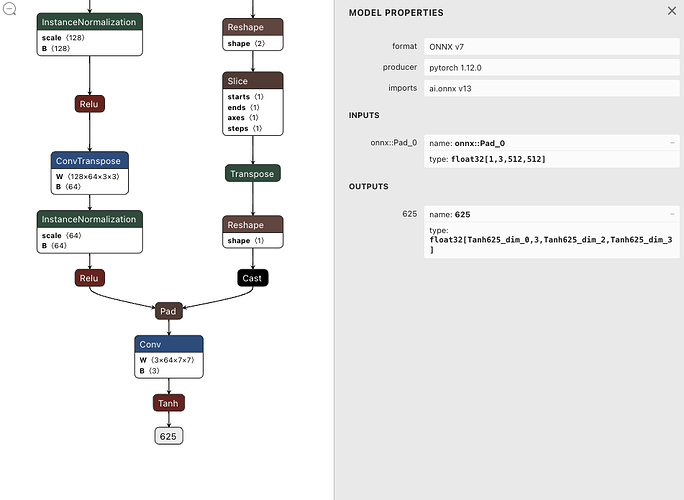Hello,
I am trained a CycleGAN and converted it to onnx model using part of code below:
net.eval()
net.cuda() # in this example using cuda()
batch_size = 1
input_shape = (3, 512, 512)
export_onnx_file = load_filename[:-4]+".onnx"
save_path = os.path.join(self.save_dir, export_onnx_file)
input_names = ["image"]
output_names = ["pred"]
dinput = torch.randn(batch_size, *input_shape).cuda() #same with net: cuda()
torch.onnx.export(net, dinput, save_path,
input_names = input_names, output_names = output_names,
opset_version = 11,
dynamic_axes={
# 'image' : {0 : 'batch_size'}, # variable length axes
'pred' : {
0:'1',
1:'3',
2:'512',
3:'512'
}})#{0 : 'batch_size'}})
# summary(net, input_shape)
print('The ONNX file ' + export_onnx_file + ' is saved at %s' % save_path)
My goal is use the onnx model in Snap Lens Studio as a lens filter, but everytime I import the model I got the error like this
18:32:04 Resource import for /Users/youjin/Downloads/latest_net_G (6).onnx failed: The ONNX network's output 'pred' dimensions should be non-negative
I printed the input and output shapes and everything looks fine to me tho,
#the last line of torchsummary
Tanh-91 [-1, 3, 512, 512] 0
#print(input.shape)
input shape torch.Size([1, 3, 512, 512])
#print(out.shape)
output shape torch.Size([1, 3, 512, 512])
I googled what ‘negative dimensioin’ implies and found this thread.
Initially the output shape was not determined when I analyse it with Netron
So I used
dynamic_axes arg of torch.onnx.export to set it [1,3,512,512].After config, It seemed right on Netron
So I thought I fixed the error but I still getting the same error.
I wonder if I can get any help.

